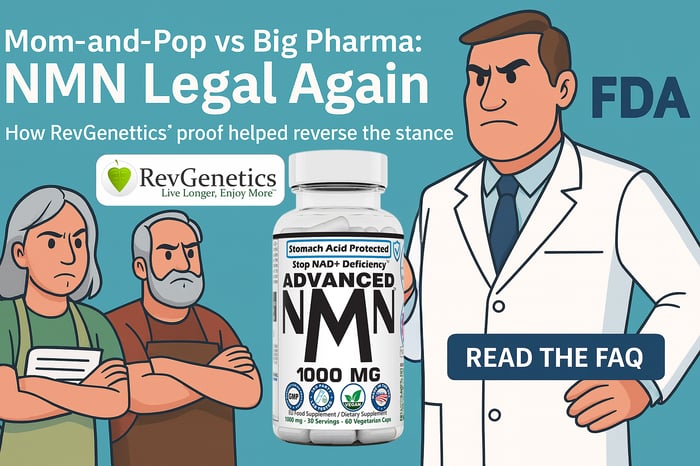Revolutionary Longevity Breakthrough: Simple Two-Drug Combination Extends Lifespan 73% in Aging Mice
Scientists at UC Berkeley have achieved something unprecedented in aging research: a 73% extension of remaining lifespan in old, frail mice using just two compounds, one already FDA-approved, the other in clinical trials. This isn't just another incremental advance; it's a potential game-changer that outperforms rapamycin, the current gold standard in longevity interventions.
Key Research Findings:
- 73% lifespan extension from treatment start (vs 9-15% for rapamycin)
- 14% total lifespan increase despite starting in very old mice
- Dramatic healthspan improvements across multiple domains
- Uses clinically available compounds with established safety profiles
The Aging Challenge: Why Current Solutions Fall Short
Despite decades of research, extending healthy human lifespan remains one of medicine's greatest challenges. Current approaches like rapamycin show promise but come with significant limitations. Rapamycin extends lifespan by only 9-15% when measured from treatment start, and carries concerning side effects including increased cancer risk and immune suppression.
The UC Berkeley team, led by Dr. Irina Conboy, took a fundamentally different approach. Instead of targeting a single pathway, they simultaneously addressed two key aging mechanisms that change in opposite directions as we age.
The Two-Pronged Strategy: OT+A5i
The breakthrough combination consists of:
Oxytocin (OT)
A hormone naturally produced in our bodies that declines with age. Best known for social bonding and childbirth, oxytocin also plays crucial roles in muscle maintenance, bone health, and tissue repair. Importantly, oxytocin has been FDA-approved for decades with an established safety profile.
ALK5 inhibitor (A5i)
A compound that blocks the TGF-β pathway, which becomes overactive as we age, promoting inflammation and tissue damage. ALK5 inhibitors like Vactosertib are currently in clinical trials with no major adverse effects reported.
This dual approach targets aging's complexity by simultaneously boosting beneficial pathways that decline while suppressing harmful ones that increase over time.
Remarkable Results: Beyond Extending Life
The results were extraordinary, particularly in male mice:
Superior Physical and Cognitive Performance
The benefits extended far beyond simple lifespan extension. Treated mice showed:
- Improved treadmill endurance - Enhanced cardiovascular fitness and stamina
- Better balance and coordination in four-limb hanging tests
- Enhanced short-term memory in novel object recognition tasks
- Reduced overall frailty across 31 different health metrics
- Increased resilience to mortality - surviving longer even after reaching frailty thresholds
The Science Behind the Success
Using advanced bio-orthogonal metabolic proteomics, researchers discovered that OT+A5i treatment restored youthful patterns in blood proteins within just seven days. The treatment normalized key aging-related pathways including:
TNF and JAK-STAT Signaling
Critical for inflammation control and immune function regulation
TGF-β Pathway Modulation
Balances tissue repair versus damage responses and fibrosis prevention
Reduced Biological Noise
Decreased protein variability - a key hallmark of cellular aging
The research team used sophisticated UMAP analysis to demonstrate that the systemic proteome of treated old mice clustered around young control mice, suggesting a fundamental reset of the aging process at the molecular level.
Sex Differences: A Critical Finding
One of the study's most important discoveries was the sex-specific response. The dramatic benefits were observed primarily in male mice, while females showed limited improvement in lifespan and healthspan. However, several key observations emerged:
- Middle-aged female mice showed fertility improvements when treated with OT+A5i
- Both sexes showed initial systemic proteomic improvements at 7 days
- Female mice became unresponsive to treatment after 4 months, while males maintained benefits
"These findings establish the significant health-span extension capacity of OT+A5i and emphasize the differences in aging and in response to longevity therapeutics between the sexes."
- Cameron Kato et al., UC Berkeley Research Team
Clinical Potential: Closer Than You Think
What makes this research particularly exciting is its translational potential:
✓ Oxytocin is FDA-approved
Used safely in clinical practice for decades with well-established dosing protocols
✓ ALK5 inhibitors in trials
Currently tested for cancer and myelodysplastic syndromes with no major adverse effects
✓ Targets fundamental aging
Addresses root causes of systemic aging rather than specific age-related diseases
Comparing to Existing Longevity Interventions
| Intervention | Lifespan Extension (from start) | Safety Profile | Clinical Availability | Healthspan Benefits |
|---|---|---|---|---|
| OT+A5i | 73% (male mice) | Both compounds clinically used/tested | Potentially rapid translation | Multiple domains improved |
| Rapamycin | 9-15% | Cancer risk, immune suppression | Off-label use existing | Variable results |
| Metformin | Variable/controversial | Generally safe | Widely available | Modest improvements |
Beyond Mice: Human Implications
While mouse studies don't always translate directly to humans, this research offers several encouraging signs for potential human applications:
- The compounds target fundamental aging mechanisms conserved across mammalian species
- The treatment worked in very old mice, equivalent to 75-year-old humans
- Effects were observed across multiple physiological systems, not just lifespan
- The intervention appears to address aging's root causes at the systemic level
- Both compounds have established human safety data
Additional Benefits: Fertility and Reproductive Health
The study revealed that middle-aged female mice treated with OT+A5i showed significant improvements in fertility, with higher numbers of successfully weaned pups compared to controls. This suggests the combination may have broader applications for age-related decline across multiple organ systems.
The Path Forward: Novel Methodological Advances
Beyond the remarkable results, this research introduces a novel statistical approach for measuring healthspan that could revolutionize longevity studies. Their method accounts for the reality that frail animals die first, avoiding the skewed data that has plagued previous aging research.
The team's use of log-rank analysis across multiple health thresholds provides a more accurate picture of intervention effects, setting a new gold standard for the field.
Deep Dive: Molecular Mechanisms
The research revealed several key mechanisms underlying the dramatic effects:
Systemic Proteome Reset
Within 7 days, treatment restored youthful patterns in circulating proteins
Reduced Inflammaging
Significant reduction in age-associated chronic inflammation markers
Enhanced Tissue Homeostasis
Improved balance between tissue repair and damage processes
Metabolic Optimization
Better cellular energy production and utilization across organ systems
What This Means for the Future of Aging
This longevity breakthrough represents more than incremental progress, it demonstrates that dramatic lifespan and healthspan extension may be achievable with existing, safe compounds. The combination approach of simultaneously modulating multiple aging pathways may be the key to unlocking significant longevity benefits in humans.
Potential Timeline to Human Applications:
- 2025-2026: Regulatory approval process for human safety studies begins
- 2026-2028: Phase I safety trials in healthy aging adults
- 2028-2032: Phase II efficacy studies with aging biomarker endpoints
- 2032+: Potential clinical availability for longevity applications
Timeline accelerated due to established safety profiles of both compounds
Implications for the Supplement Industry
This research has significant implications for the longevity supplement industry. Unlike many supplements with limited evidence, this combination targets validated aging pathways with dramatic, measurable results. The findings suggest that:
- Combination approaches may be more effective than single-compound strategies
- Pathway-specific targeting could optimize supplement formulations
- Biomarker monitoring will become crucial for personalized longevity interventions
Key Takeaways
The Bottom Line
This research marks a potential turning point in longevity science. By targeting aging's fundamental mechanisms with clinically available compounds, we may be on the verge of making healthy longevity extension a reality rather than just a promise. The 73% lifespan extension achieved here represents the most significant advance in aging research in decades and provides a clear roadmap for human applications.







